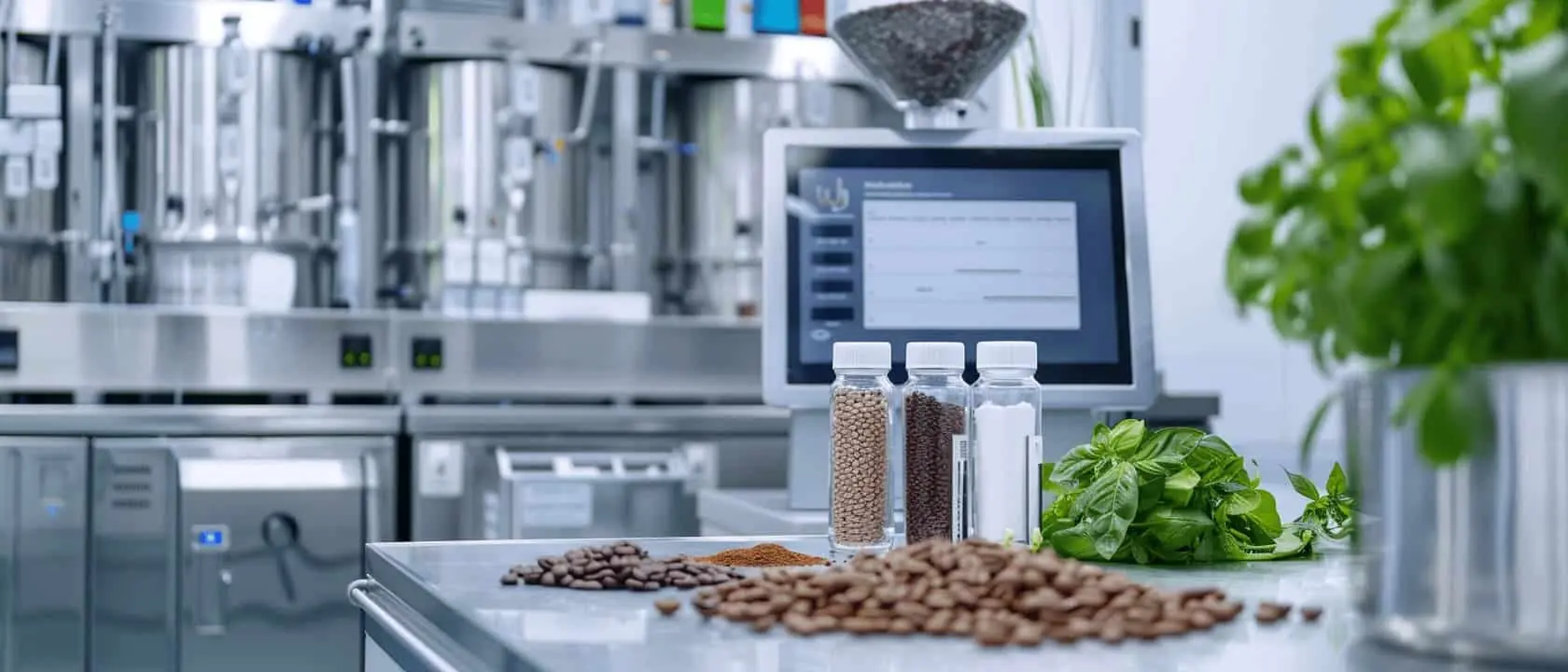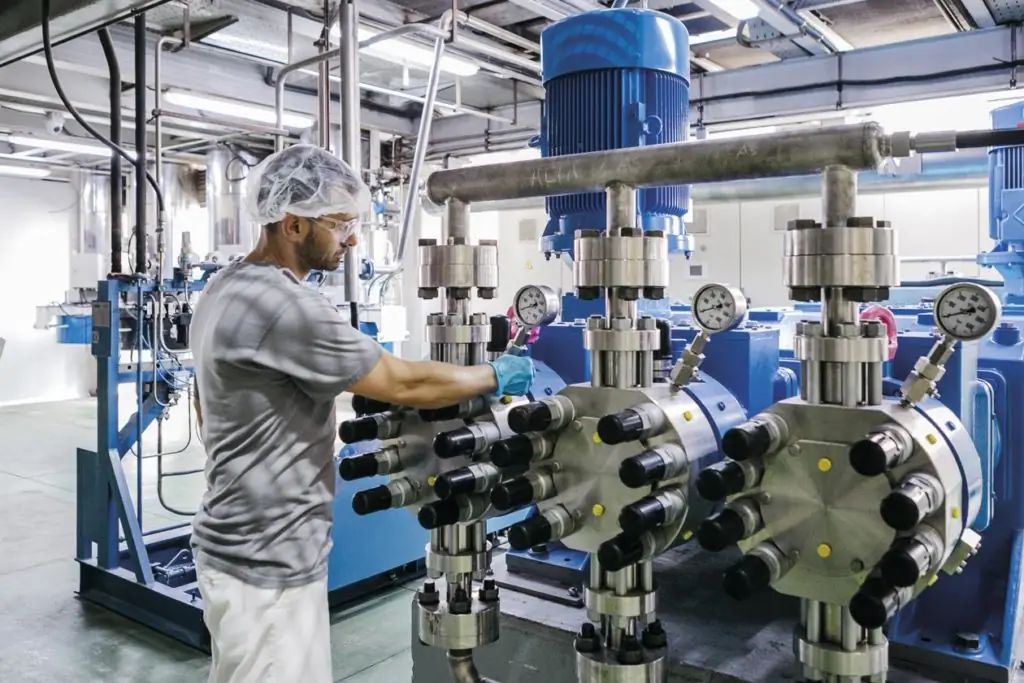Supercritical fluid extraction (SFE) is an advanced technique that uses fluids in a supercritical state (such as carbon dioxide) to extract specific compounds from solid or liquid matrices. In the food industry, this technology stands out for its ability to obtain high-purity extracts, free from toxic solvents and with lower environmental impact. Its versatility allows operation at relatively low temperatures, which helps preserve thermolabile compounds such as antioxidants, essential oils, vitamins or natural pigments.
Moreover, supercritical CO₂ is a non-flammable, non-toxic solvent that is easily removed from the final product, making it suitable for applications in environments with strict safety and quality requirements. This positions supercritical fluid extraction as a key enabling technology for developing safer, more natural and differentiated ingredients that meet consumer demand and sustainability goals.
Application of supercritical fluid extraction in food industry
Research has shown numerous uses for the application of supercritical fluid extraction in food industry. Among the most established are:
- Extraction of natural flavours and aromas from fruit peels, herbs, spices or coffee, without the use of organic solvents or altering the original sensory profile. These extracts are used in food, beverages, cosmetics and nutraceuticals.
- Decaffeination of coffee and tea, achieving up to 99% selective recovery of caffeine while preserving the original flavour.
- Defatting of cocoa and nuts, reducing fat content to below 0.1% and simultaneously obtaining valuable co-products such as cocoa butter or nut oil.
- Development of functional ingredients, such as antioxidant, antimicrobial or anti-inflammatory extracts from natural sources like oregano, rosemary, turmeric, black garlic or other botanicals.
Emerging innovations include the valorisation of agri-food by-products. For example, AINIA has developed processes that transform oilseed or cereal press cakes into flours with over 50% fat reduction and increased protein concentration (final fat content <2–3%). These protein-rich flours are used in diet foods, sports nutrition or functional product formulations.
Therefore, the application of supercritical fluid extraction in food industry not only enables the production of high value-added products, but also fits within circular economy strategies by recovering waste from the fruit, oilseed or cereal industries. It also supports the formulation of healthier, cleaner-label and more natural foods, aligned with consumer trends such as personalised nutrition and digestive wellness.
Supercritical fluid extraction: Advantages over conventional extraction technologies
Although often perceived as an expensive technology reserved for premium products, the application of supercritical fluid extraction in food industry is already used in the development of everyday consumer products. This includes decaffeinated coffee, natural flavourings in baked goods or beverages, and essential oils used in natural preservatives or cosmetics. As processes are optimised and equipment becomes scalable, costs decrease and the technology becomes increasingly accessible and widespread.
Compared with traditional techniques such as distillation or solvent extraction, supercritical CO₂ extraction offers key advantages:
- Higher selectivity
- Cleaner processes
- Lower energy consumption
- Safer final products for the consumer
These attributes make it especially relevant for food products aimed at sensitive populations, such as children or individuals with intolerances, as well as for premium markets that prioritise transparency and naturality.
Another major advantage is the ability to tune the pressure and temperature of the process to target specific types of compounds, from polar to non-polar. This allows for customised, selective extractions that are particularly useful in the development of functional ingredients and bioactive compounds for food and nutraceutical applications.
Challenges and future research directions for supercritical fluid extraction
Although supercritical fluid extraction is already well-established in industries such as cosmetics and pharmaceuticals, its broader adoption in food still faces several challenges. These include initial investment costs, the need to tailor process conditions to various raw materials, and industrial scalability.
Current research focuses on process optimisation, development of co-extraction systems, and integration with other technologies such as encapsulation, fermentation or impregnation. The use of artificial intelligence for predictive modelling of process conditions, as well as life cycle assessment (LCA) for environmental evaluation, are also key lines of work.
All these strategies aim to make the application of supercritical fluid extraction in food industry more competitive, sustainable and aligned with market and regulatory requirements—positioning it as a key technology for the transformation of the food sector.






